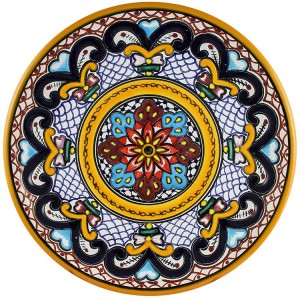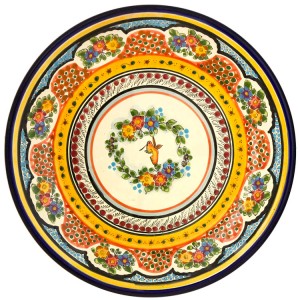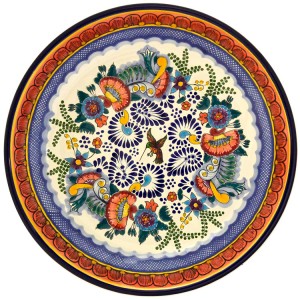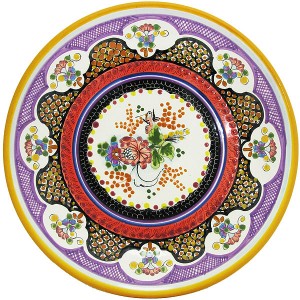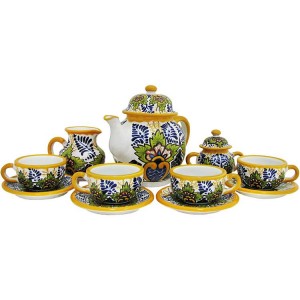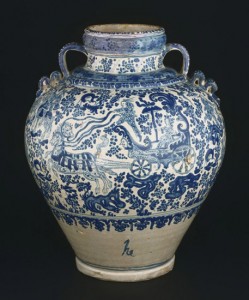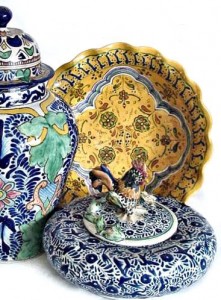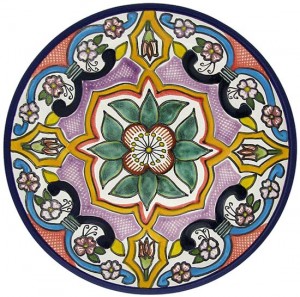 True, certified Talavera pottery is produced in the city of Puebla, in the state of Puebla, Mexico however, high-quality, modern Talavera pottery is also available from factories in other Mexican districts such as Dolores Hidalgo and Guanajuato.
True, certified Talavera pottery is produced in the city of Puebla, in the state of Puebla, Mexico however, high-quality, modern Talavera pottery is also available from factories in other Mexican districts such as Dolores Hidalgo and Guanajuato.
From the time of the Olmecs, between 1200 BC and 600 AD, pottery has been a central part of Mexican life. Their use of clay, knowledge of primitive firing and coloring techniques, as well as designs was passed down to other cultures that followed. The Olmecs are considered by many as the mother culture of Mesoamerican civilizations.
Talavera de la Reina, a Spanish village, has long been influential in the world’s knowledge of fine ceramics. When the Muslims conquered North Africa and moved into Europe, their tin-glazed ceramics, known as Majolica, came to Spain. Majolica was developed in the Middle East but gained cultural diversity through influences from the Chinese, Italians, Moors and Spanish cultures. Spanish craftsmen learned and further developed this craft and, in the 16th century, introduced it to Mexico. The term Talavera is used to describe faithful reproductions of the pottery that is made in Talavera de la Reina, Spain.
When the Spanish introduced their stylized pottery to their recently established colony in Mexico, the local artisans blended these new techniques with their established practices to creat the famous Talavera pottery of Mexico. It is believed that the first workshop was established in the city of Puebla around 1600 AD. Puebla became the home of authentic Mexican Talavera and is where the first potter’s guilds were formed to establish standards and regulations for the production of Talavera.
Majolica ceramics, made in the Talavera style, are produced throughout many different regions of Mexico. These new influences have produced a variety of modern styles and designs that are growing in popularity. One such area, Dolores Hidalgo, is the home of Artesanias Amora fabrica. It is considered the best fabrica in the area and produces some of the finest quality modern Talavera in Mexico today. Although these products do not meet the exacting standards established by the Consejo Regulador de Talavera, they are fine quality modern Talavera pieces a modest prices.

